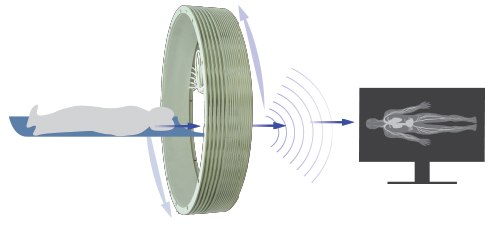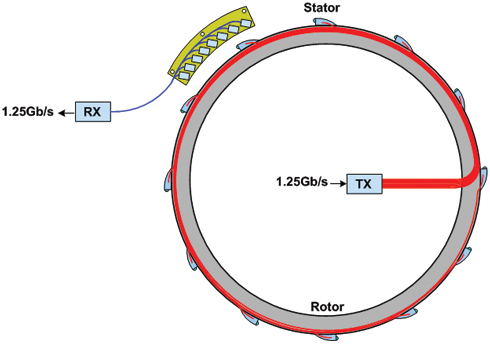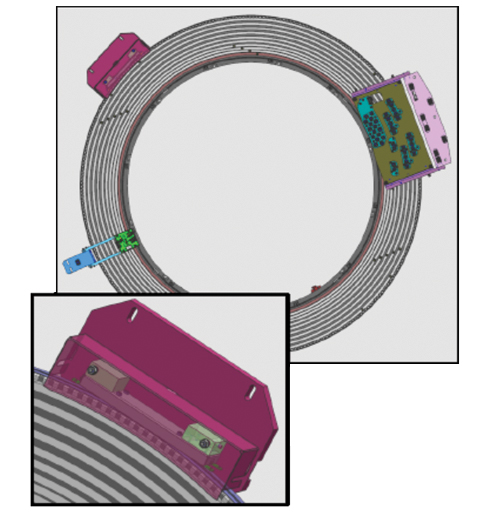Image Data Transfer Across a Slip Ring in CT Machines
The essential function of a CT imaging machine is the passage of an x-ray beam through the patient’s body and then capturing this scattered x-ray beam by an array of detectors called a DAS (data acquisition system) as shown in Figure 1. Since the x-ray beam and the DAS are rotated around the patient’s body, the detector data must be carried to the stationary processor that will convert the detector data to 3-D images across a slip ring. Since the aggregated detector data typically exceeds data speeds of 1 Gbps, a traditional contacting slip ring will not work, so non-contacting methods are used.
Figure 1: CT slip ring with display on monitor
Moog uses two techniques to transfer detector data in its CT slip rings. The first method is optical illustrated in Figure 2. In this design, the electrical digital detector data is converted into optical data, transmitted through a rotating circumferential array of lenses, and then captured by a stationary lens array and passed along to the image processor. Typically these optical rings transmit data between 1.25 and 5 Gbps. Additional receiver arrays can be added along with a high-speed switch on the input side to allow multiple data channels to be “spatially multiplexed” to achieve data speeds in excess of 10 Gbps.
Figure 2: Optical data ring
An alternative to the optical ring is an RF coupled slip ring shown in Figure 3. In this case, the digital data is put onto a rotating antenna and picked up on a stationary probe. Signal conditioning is used to maintain an acceptable eye pattern for the data. Typical data speeds for a single channel are 1.25 to 5 Gbps and parallel data paths can be used to add channels or increase the aggregate data speed. This antenna system is designed to be effective in the near field but with low energy in the far field to minimize EMI effects. In some cases, the digital data is used to modulate an RF signal, but in most cases the digital signal without modulation can be transferred.
The optical and RF data rings each have their relative advantages and disadvantages. The primary advantage of the optical ring is lack of high frequency electrical signals on the large diameter slip ring structure thereby minimizing EMI (electromagnetic interference). Additionally, the ring can be completely electrically isolated from the structure. The primary advantage of the RF design is a slightly lower cost of electronics.
Moog produces both styles of data rings for its CT slip rings, Moog engineers can assist in the selection of the best technology for reliable data transfer in any CT machine design.



